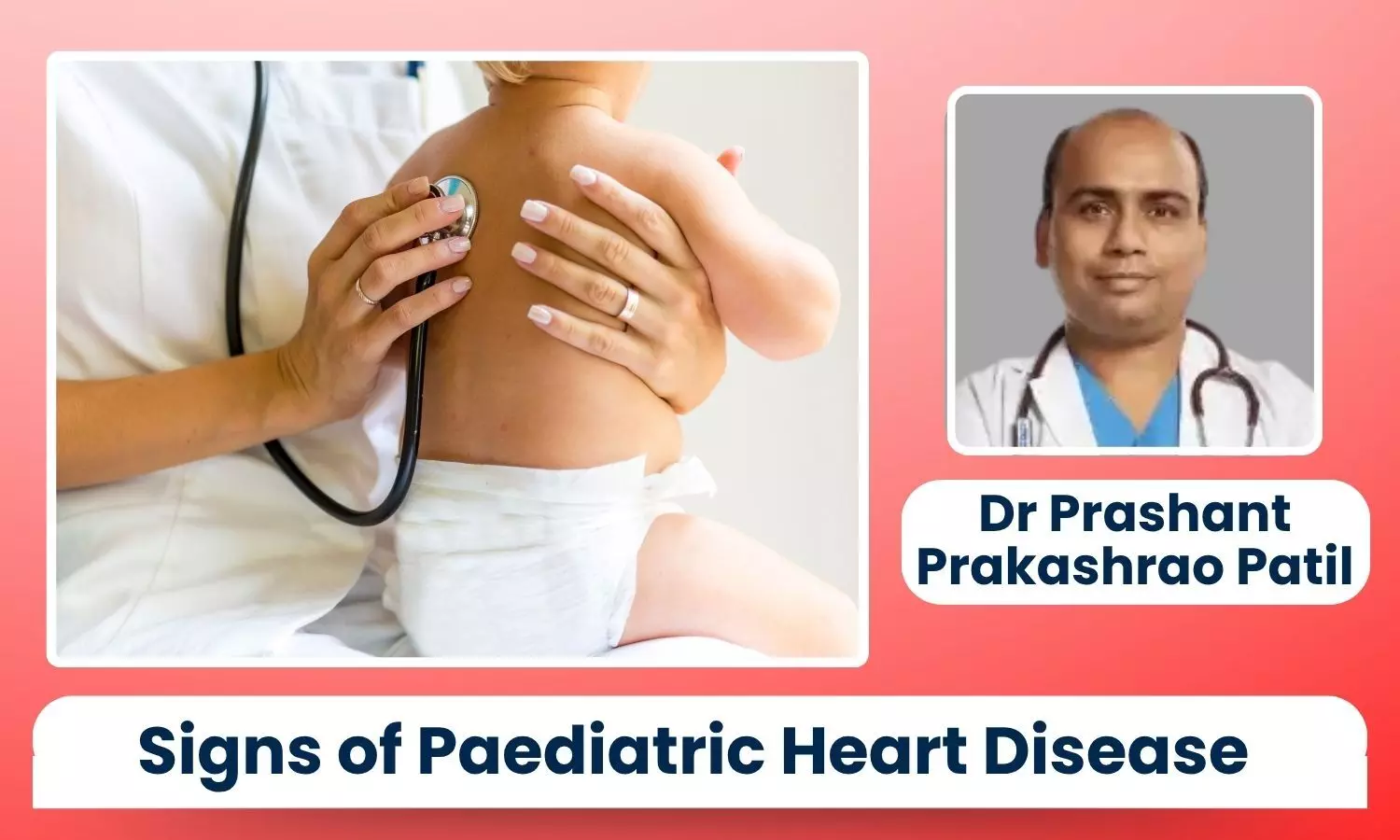Why Blue Lips Matter: Recognising Silent Signs of Paediatric Heart Disease - Dr Prashant Prakashrao Patil

Not every child with heart disease looks unwell. Some of the most serious conditions can hide behind what seems like everyday fussiness or fatigue.
While dramatic symptoms like chest pain or breathlessness are uncommon in children, subtle signs, like bluish lips, cold hands and feet, or slow weight gain, can quietly point to a struggling heart.
A bluish tint on the lips or under the tongue isn’t just about skin colour, it’s often the body’s quiet way of saying that something’s wrong.
Cyanosis refers to a bluish tint that appears when the blood isn’t getting enough oxygen. In small children, especially infants, this change can be subtle, sometimes fading in and out without much notice. But for a clinician, even the faintest trace is a reason to immediately check how well the child’s heart and lungs are functioning.
Colour Clue: What Blue Lips Can Mean
In a healthy child, the heart pumps oxygen-rich blood from the lungs to every part of the body. When this process is disrupted, due to structural heart defects, faulty valves, or holes between heart chambers, some of the blood bypasses the lungs or doesn’t get oxygenated properly.
The result? Skin and mucous membranes begin to take on a bluish hue.
This change often shows up when the child is feeding, crying, or even just moving around. Parents may brush it off as a reaction to cold air or mild breathing trouble, but if the lips or fingertips keep looking dusky, it’s important to get the heart thoroughly checked.
Cold Hands, Poor Weight Gain: Other Quiet Signals
Another overlooked sign is cold extremities. When the heart isn’t pumping effectively, the body begins to prioritise blood flow to vital organs.
The hands and feet, being less essential, get colder. While this can occasionally happen in healthy children during temperature changes, persistent cold limbs—especially if accompanied by fatigue could suggest poor circulation.
Likewise, when a baby isn’t gaining enough weight, the cause isn’t always poor feeding. Sometimes, an underlying heart issue makes it hard for the child to nurse properly, leading to early fatigue, heavy sweating, or breathlessness when lying down.
Over time, these subtle challenges can lead to what appears to be ‘failure to thrive’, when, in fact, the heart is overworked and underperforming.
Why Early Detection Matters
The tricky part about pediatric heart disease is that many symptoms don’t appear until the heart is under significant stress. By then, treatment becomes more complex. But if warning signs are caught early, often with a simple echocardiogram or pulse oximetry test, many heart conditions can be managed, corrected, or stabilized before long-term damage occurs.
Serious conditions like Tetralogy of Fallot, transposition of the great arteries, or ventricular septal defects don’t always start with loud symptoms. They often whisper their presence through small changes and catching them early can make all the difference to a child’s future health.
What Parents Should Watch For
Some signs of pediatric heart trouble can slip under the radar because they seem harmless at first. If a child’s lips or tongue sometimes take on a bluish tinge, especially when they’re active, crying, or feeding, it shouldn’t be brushed off.
Cold, sweaty hands and feet that don’t warm up with the room, or a baby who tires easily while feeding and sweats a lot, are all signs the heart might be working harder than it should.
If a child seems unusually tired after small amounts of activity, or if their growth and weight gain seem to stall despite eating well, it’s worth looking closer. Even fast breathing that shows up without fever could be a quiet clue.
Together, these small things can paint a bigger picture, and catching them early can make all the difference.
It’s also important to listen to your instincts. Parents often notice when something isn’t quite right, even if it’s hard to put into words. If your child seems unusually tired, less playful, or frequently under the weather, don’t hesitate to bring it up with your doctor.
A Note on Newborns
In newborns, cyanosis may be even more subtle. Some heart conditions only become obvious a few days after birth, once the fetal circulation pathways begin to close.
This is why routine newborn screening and checkups are crucial—even for babies who appear well at birth.
Moving Forward with Clarity
Heart disease in children isn’t always loud. Sometimes, it whispers through signs that are easy to miss unless you're looking. But with increased awareness, timely screening, and expert intervention, outcomes can be significantly improved.
If you notice any of these signs, or even have a gut feeling that something feels “off”, consult a pediatrician or pediatric cardiologist. In matters of the heart, especially in children, it’s always better to act early.
Disclaimer: The views expressed in this article are of the author and not of Health Dialogues. The Editorial/Content team of Health Dialogues has not contributed to the writing/editing/packaging of this article.


